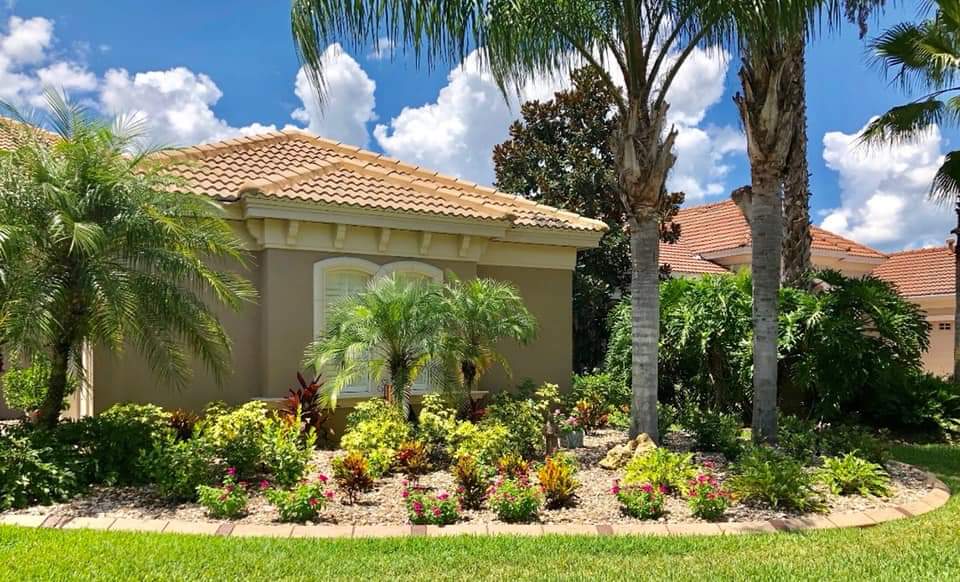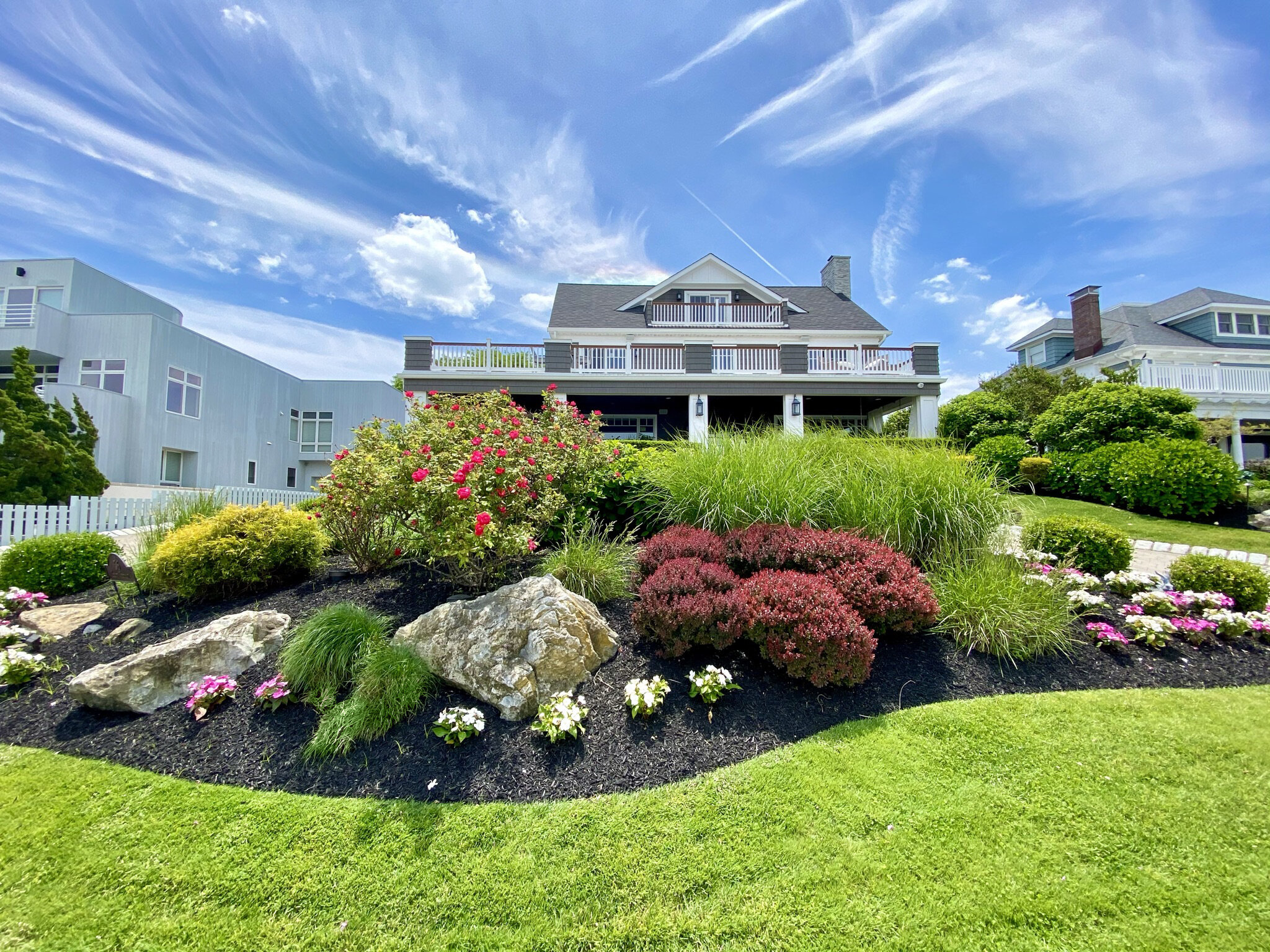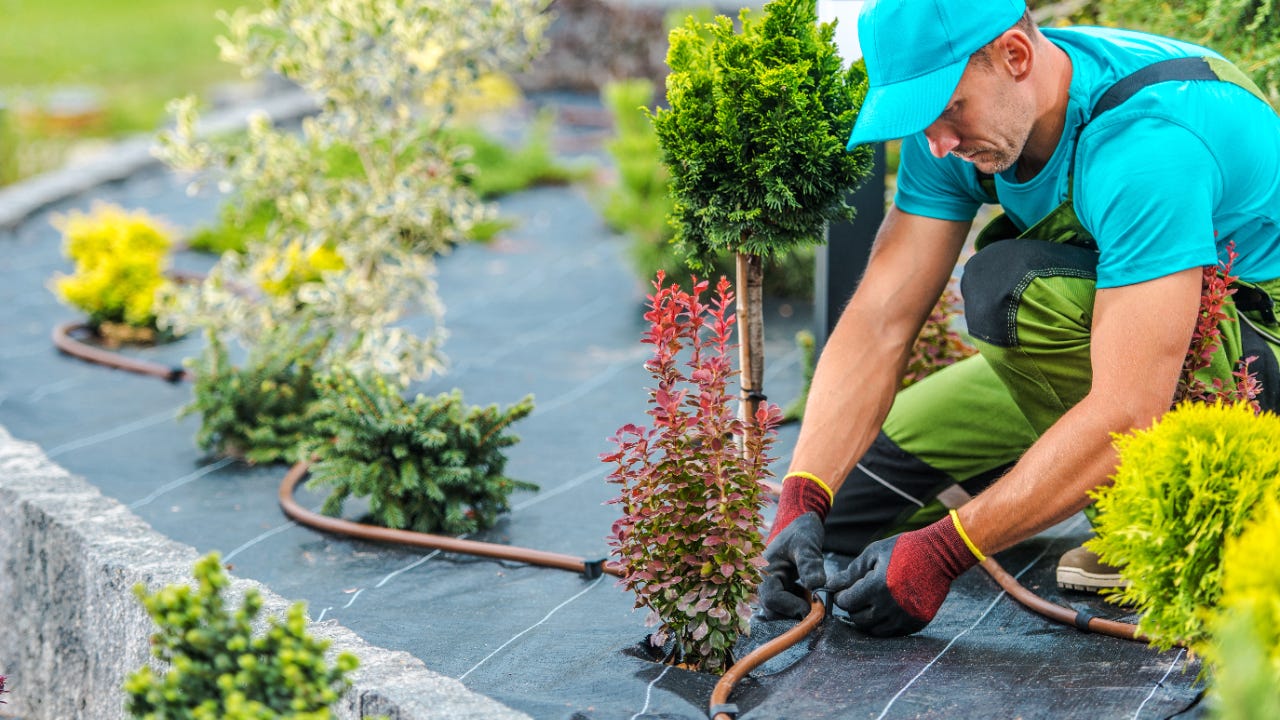A Comprehensive Overview to Creating and Implementing Effective Landscape Design Solutions
The art and science of landscape design expand past simple appearances; they include a thoughtful assimilation of layout principles, environmental stewardship, and functional application. A thorough guide to effective landscaping solutions starts with a comprehensive understanding of your exterior space, emphasizing the value of balance, proportion, and unity. As we check out sustainable strategies and the selection of appropriate flora, the ramifications for biodiversity and neighborhood wellness end up being increasingly noticeable. What techniques can one utilize to make sure these landscapes not only thrive however additionally prosper attuned to their environments?

Recognizing Landscape Design Concepts
One may question what foundational aspects contribute to efficient landscape layout. At its core, successful landscape layout rests on a number of vital concepts that assist the setup and choice of aspects within a space. These concepts consist of unity, equilibrium, rhythm, and percentage, each offering to create an unified exterior setting.
Unity refers to the natural relationship amongst various components, guaranteeing that they interact visually and functionally. Equilibrium can be achieved through balanced or asymmetrical plans, enabling the landscape to really feel stable and welcoming. Proportion involves recognizing the scale of aspects in regard to each other and the surrounding setting, promoting aesthetic consistency and convenience.

Assessing Your Outdoor Room
Before applying the concepts of landscape style, a detailed analysis of your exterior room is crucial. This first evaluation assists define the scope of your landscaping job and ensures that your design aligns with the unique features of your building. Begin by analyzing the dimensions of your room, taking specific measurements to comprehend the available area for various elements such as gardens, patio areas, and paths.
Following, observe the existing functions of your landscape, consisting of topography, dirt top quality, and drain patterns. These aspects dramatically affect plant option and positioning. Furthermore, evaluate the sunshine direct exposure across various locations throughout the day, as this will certainly impact the kinds of plants that thrive in your yard.
Take into consideration the microclimates developed by frameworks, trees, and other challenges, as they can impact temperature level and wetness degrees. Finally, remember of any kind of existing plants or hardscape aspects that you wish to preserve or remove. This thorough evaluation lays the foundation for a educated and reliable landscaping option, making sure that your layout is not only cosmetically pleasing but likewise practical and lasting for years to come.
Sustainable Landscaping Strategies
Integrating sustainable landscape design techniques is necessary for creating an eco liable outside space. These practices not only advertise environmental balance but additionally enhance the functional and visual worth of a landscape. One foundational strategy is the application of indigenous plants, which require less water and upkeep while supporting regional wildlife. Applying efficient watering systems, such as drip irrigation, minimizes water waste and ensures that plants receive sufficient dampness.

One more effective method is the tactical positioning of trees and shrubs to offer natural windbreaks and shade, hence decreasing energy expenses (Palm Desert Landscaping). Rain yards can be incorporated into the landscape style to take care of stormwater drainage successfully, filtering pollutants prior to they enter waterways
Picking the Right Plant Kingdoms
Selecting the right plants for your landscape is essential website link to attaining both visual allure and environmental harmony. The process starts with an understanding of your regional environment, click soil problems, and the certain microenvironments within your landscape. Assessing factors such as sunlight direct exposure, moisture levels, and existing plants will certainly help you choose plants that flourish in your special setup.
Take into consideration including indigenous plants, as they are well-adapted to neighborhood problems, call for much less upkeep, and support neighborhood wild animals. Additionally, picking a varied selection of varieties can boost biodiversity while lowering the threat of illness and bug break outs. It is necessary to review the development routines, flowering periods, and seasonal colors of potential plants to develop a natural and vibrant landscape.
Furthermore, consider the meant use of the space; for example, if the location will experience high foot traffic, choose resistant ground covers. By attentively choosing plants that align with both your visual goals and environmental demands, you can develop a lasting landscape that not only boosts your residential property however also adds positively to the surrounding community.

Execution and Maintenance Methods
As soon as the best plants have actually been picked for your landscape, the focus shifts to efficient execution and ongoing maintenance strategies. Successful setup begins with correct website prep work, that includes soil testing to establish nutrient degrees and pH, followed by amending the soil as needed. Meticulously arrange plants according to their growth behaviors and light needs, guaranteeing appropriate spacing to advertise healthy and balanced development.
Watering is a vital aspect of application. Develop a watering routine that takes into consideration the details requirements of each plant types, changing for seasonal modifications. Making use of drip watering systems can improve water effectiveness and minimize overflow.
Maintenance methods should be carried out to make sure the durability and vitality of your landscape. Regular jobs consist of weeding, mulching, and pruning to control development and stop condition. Fertilizing must be carried out based on soil examinations, giving the needed nutrients without over-fertilizing.
Keeping an eye on for look at more info bugs and illness is essential; early discovery can stop considerable damage. Lastly, seasonal changes to maintenance routines, such as winterizing perennials and preparing for springtime growth, will make sure that your landscape continues to be healthy and balanced and visually appealing year-round.
Conclusion
Effective implementation and continuous upkeep better ensure the longevity and vitality of landscapes. By integrating these aspects, landscapes can be changed right into beautiful, useful environments that promote biodiversity and contribute positively to neighborhood wellness.
One could question what fundamental components add to effective landscape design. At its core, successful landscape design hinges on several crucial concepts that lead the setup and option of elements within a space.Selecting the right plants for your landscape is essential to achieving both visual appeal and ecological harmony. It is essential to evaluate the development behaviors, growing durations, and seasonal shades of possible plants to develop a dynamic and cohesive landscape.
Once the right plants have actually been picked for your landscape, the emphasis moves to effective implementation and ongoing upkeep techniques.